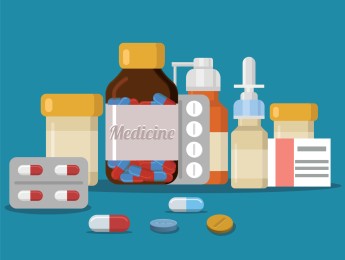Pharmacovigilance is the science and activity related to detecting, assessing, understanding, and preventing adverse effects or any other drug-related problems. This course provides a practical introduction to the core concepts of pharmacovigilance and drug safety, highlighting the importance of monitoring the risks and benefits of medicines once they are on the market.
The training is designed to build foundational knowledge and skills in safety monitoring, adverse drug reaction (ADR) reporting, risk assessment, and regulatory compliance. It will also explore real-life case studies and international guidelines to help professionals understand how to ensure the safe use of medications throughout their lifecycle.
By the end of this course, participants will be able to:
- Understand the principles and goals of pharmacovigilance.
- Identify different types of adverse drug reactions and their causes.
- Explain the process of adverse event reporting and signal detection.
- Discuss international regulatory requirements for drug safety.
- Evaluate risk-benefit analysis in post-marketing surveillance.
- Apply basic tools and techniques for data analysis in drug safety.
- Explore the role of healthcare professionals in improving medication safety.
This course is suitable for:
- Pharmacy graduates and interns.
- Pharmacovigilance officers and assistants.
- Clinical research coordinators.
- Regulatory affairs professionals.
- Medical affairs and safety specialists.
- Healthcare professionals involved in drug therapy.
- Anyone interested in drug safety monitoring and reporting.
The training uses a blended learning approach, including instructor-led sessions, real-world case discussions, interactive quizzes, and visual tools. Participants will engage in short, focused presentations, hands-on practice with sample safety reports, and guided group discussions to apply concepts in real scenarios. Practical examples and downloadable resources will support learning beyond the sessions.
Day 5 of each course is reserved for a Q&A session, which may occur off-site. For 10-day courses, this also applies to day 10
Section 1: Introduction to Pharmacovigilance
- Definition and importance of pharmacovigilance.
- The history and global evolution of drug safety.
- Key terms: ADR, AE, signal, risk management.
- Stakeholders in pharmacovigilance: industry, regulators, healthcare providers.
Section 2: Adverse Drug Reactions (ADRs)
- Types of ADRs: predictable vs. unpredictable.
- Factors influencing ADRs (age, gender, genetics, drug interactions).
- Case examples of serious ADRs in history.
- Methods of identifying and reporting ADRs.
Section 3: Reporting and Data Collection
- Individual Case Safety Reports (ICSRs).
- Reporting timelines and formats.
- Sources of safety data (clinical trials, spontaneous reports, literature).
- Importance of complete and accurate reporting.
Section 4: Signal Detection and Evaluation
- What is a safety signal?
- How signals are detected from data.
- Tools used: disproportionality analysis, reporting ratios.
- Decision-making based on signal evaluation.
Section 5: Regulatory Requirements
- WHO and ICH guidelines for pharmacovigilance.
- Role of national regulatory authorities (e.g., FDA, EMA).
- Periodic Safety Update Reports (PSURs) and Risk Management Plans (RMPs).
- Post-marketing surveillance requirements.
Section 6: Risk Management and Communication
- Risk-benefit analysis in drug safety.
- Developing risk minimization strategies.
- Communicating risks to patients and professionals.
- Case examples of product recalls and label changes.
Section 7: Pharmacovigilance in Special Populations
- Pediatric, geriatric, and pregnant populations.
- Off-label use and challenges in safety monitoring.
- Role of pharmacogenomics in drug response.
- Importance of real-world evidence.
Section 8: Pharmacovigilance Systems and Tools
- Pharmacovigilance databases (VigiBase, EudraVigilance).
- Introduction to software for safety reporting.
- Basics of coding systems (MedDRA, WHO-ART).
- Integrating electronic health records in safety monitoring.
Section 9: Role of Healthcare Professionals
- Building a safety culture in hospitals and pharmacies.
- Encouraging ADR reporting at all levels.
- Educating patients on medication risks.
- Ethical responsibility in ensuring drug safety.
Section 10: Practical Exercises and Case Studies
- Review of real-life case reports.
- Group discussions on safety issues and decisions.
- Practice filling out an ICSR form.
- Final quiz with CPHQ-style questions.
Upon successful completion of this training course, delegates will be awarded a Holistique Training Certificate of Completion. For those who attend and complete the online training course, a Holistique Training e-Certificate will be provided.
Holistique Training Certificates are accredited by the British Accreditation Council (BAC) and The CPD Certification Service (CPD), and are certified under ISO 9001, ISO 21001, and ISO 29993 standards.
CPD credits for this course are granted by our Certificates and will be reflected on the Holistique Training Certificate of Completion. In accordance with the standards of The CPD Certification Service, one CPD credit is awarded per hour of course attendance. A maximum of 50 CPD credits can be claimed for any single course we currently offer.
- Course Code IND5 - 168
- Course Format Classroom, Online,
- Duration 10 days










